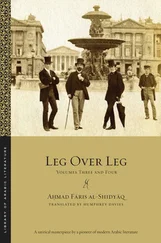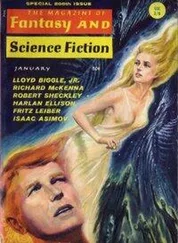250 ṭalāsim : “talismans.”
251 ʿazāʾim : “spells.”
252 ruqā : “incantations, charms.”
253 tamāʾim : “amulets.”
254 ʿūdhah : “spell.”
255 siḥr : “magic.”
256 ṣadā : in the list of definitions at the end of the chapter, this word is defined under the entry for al-kādis , following the Qāmūs .
257“those lands” ( tilka l-bilād ): presumably, the lands to which he was bound before the ship turned back.
258“the mankūs ”: “three lines following one another immediately, then one on its own” ( Lisān ).
259The wording seems to be the author’s, not that of a dictionary, and he interprets ḥazā as being of the root ḥ-z-w rather than ḥ-z-y , an alternative given by the Lisān but not the Qāmūs; al-taḥazzī is the noun formed from the reflexive variant of the verb.
260“a tree”: presumably of the kind also called ratīmah .
261“or etc.”: indicating that the entry in the Qāmūs continues with other less relevant definitions.
262“on the pattern of kataba ” ( ka-kataba ): a word having the same pattern of consonants and vowels as that of the subject of the definition is used to disambiguate its spelling, a necessary procedure given that short vowels and other morphological features are not always indicated in writing and, if indicated, are vulnerable to error; the meaning of the word used ( kataba “to write”) is irrelevant.
263“the minor magician who claims powers of divination and knocks small stones together” ( al-ḥāzī al-mutakahhin al-ṭāriq bi-l-ḥaṣā ): the Qāmūs quotes an authority to the effect that the ḥāzī “has less knowledge than the ṭāriq (‘one who bangs small stones together’), and the ṭāriq can scarcely be said to divine; the ḥāzī speaks on the basis of supposition and fear.”
264 al-naffāthāt fī l-ʿuqad : the phrase is taken from Q Falaq 113:4 and means literally “the women who blow on knots.”
265“too well-known to require definition” ( m ): here, as frequently elsewhere, the Qāmūs uses the abbreviation m , standing for maʿrūf (“well known”).
266“a separate book”: unidentified, but not, as one might expect, his Al-Jāsūs ʿalā l-Qāmūs (the verb iḥtawā is dealt with there but in terms of transitivity versus intransitivity, not root-assignment or semantics).
267Q Insān 76:10.
268“of moon and of money-wagering” ( al-qamar wa-l-qimār ): perhaps because exposure to moonlight was considered by the ancient Arabs to be hazardous, as, of course, is wagering.
269“cold talk” ( al-kalām al-bārid ): idiomatically, “rudeness.”
270“an instrument containing drink, or… one containing meat” ( adātun fī-hā sharāb… ukhrā fī-hā laḥm ): i.e., a bar or a restaurant, amenities that the author puts on the same level as bed-warmers and hot-water bottles by referring to each as an adāh (“instrument, device”).
271“their precipitation is bottom up, or in other words from the heads of people who are themselves ruled to the heads of those who rule” ( lafẓuhā min siflin ilā ʿilwin ay min ruʾūs nāsin masūdīn ilā ruʾūsi nāsin sāʾidīn ): apparently meaning that judges, being themselves subjects of the ruler, cannot impose the law upon him.
272“a certain vagabond was once the guest of people who failed to honor and celebrate him”: perhaps a reference to the author’s treatment in Malta, or Egypt, versus that which he received in England or France.
273“here”: i.e., in this book.
274“Old Testament”: see 1.16.2, n. 233.
275The reference is unidentified.
276“opener of the womb”: the referent has changed, being now the firstborn child and not God; for the two different usages, see, e.g., Gen. 29:31 and Exod. 13:2.
277“the secret’s being revealed” etc.: cf. 1.14.9 above.
278The following list reflects the medical science not of the mid-nineteenth century but mainly of the pre-Islamic and early Islamic periods, whose language provides the corpus for the Qāmūs . It thus includes terms not recognized by modern science, some of which are based on medieval understandings of camel and horse, rather than human, anatomy.
279“the Joker”: or “the Liar.”
280“The name of al-Farazdaq’s devil”: pre-Islamic and early Islamic Arabs believed that major poets had their verses dictated to them by personal devils; Hammām ibn Ghālib al-Farazdaq (ca. 20–110/640–728) identified his demon as bearing the name ʿAmr.
281“al-Shayṣabān”: a name of the Devil (as the two following items), but also the name of a forefather of a certain tribe of the jinn and as such repeated below.
282“The Corrupter… Cut-nose”: unlike the preceding, the majority of which are proper names, the following five items are common epithets of Satan.
283 arḍ khāfiyah : on khāfiyah in the sense of “jinn (collectively),” see further down this list.
284“with or without nunation” ( wa-qad yuṣraf ): certain indefinite nouns are inflected with terminations ending in the letter nūn (n), a feature known as nunation, others with terminations not ending in nūn , and a few according to either regime; thus Wabār when fully inflected may be pronounced (in the nominative) either Wabārun or Wabāru.
285“Wabār ibn Iram”: Iram was one of the five sons of Sām, son of Nūḥ; among his descendants was Wabār, forefather of the tribe of ʿĀd, which God destroyed for practicing false belief in the sanctuary of the Kaaba.
286“The name of one of the jinn who gave ear to the Qurʾān”: a reference to “Remember how We sent to you a band of the jinn who wished to hear the Qurʾān and as they listened they said to one another, ‘Be silent and listen’….” (Q Aḥqāf 46:29); the jinn heard Muḥammad reciting during his retreat from al-Ṭāʾif and became believers.
287“ mārid ”: a sub-species of jinn, literally “the rebellious.”
288“I can’t find it in the Qāmūs ”: it does in fact appear there, although without a definition, being glossed simply as synonymous with ʿaḍrafūṭ (see below); other dictionaries (e.g., the Lisān ) define it as meaning “old woman.” As the author points out, the word also occurs in the Qāmūs as the word used to disambiguate the pronunciation of most of these (in Arabic terms) bizarre-sounding words.
289“the lexicographer” ( al-m.ṣ .): an abbreviation for al-muṣannif .
290“fading mirage”: and twelve other definitions (in the Qāmūs ), including “ghoul” and “devil.”
291“the ant mentioned in the Qurʾān”: “… and when they came to the Valley of the Ants, one ant said, ‘Ants! Go into your dwellings lest [Sulaymān] and his hosts inadvertently crush you’” (Q Naml 27:18).
292“the jumper” ( al-waththāb ): neck-muscle spasm.
293al-Hirāʾ: “a devil charged with [causing] bad dreams” ( Qāmūs ).
294“Muḥammad or Maḥmūd”: names specific to Muslims, while the emir was a Christian.
295“unbored pearls”: virgins, in conventional poetic imagery.
296“the letter nūn ”: twenty-nine of the sūra s (“chapters”) of the Qurʾān commence with one or more letters of the alphabet of unknown significance. The Fāriyāq takes the nūn preceding the verse quoted here (Q Qalam 68:1) to stand for naḥs (“bad luck”).
Читать дальше












